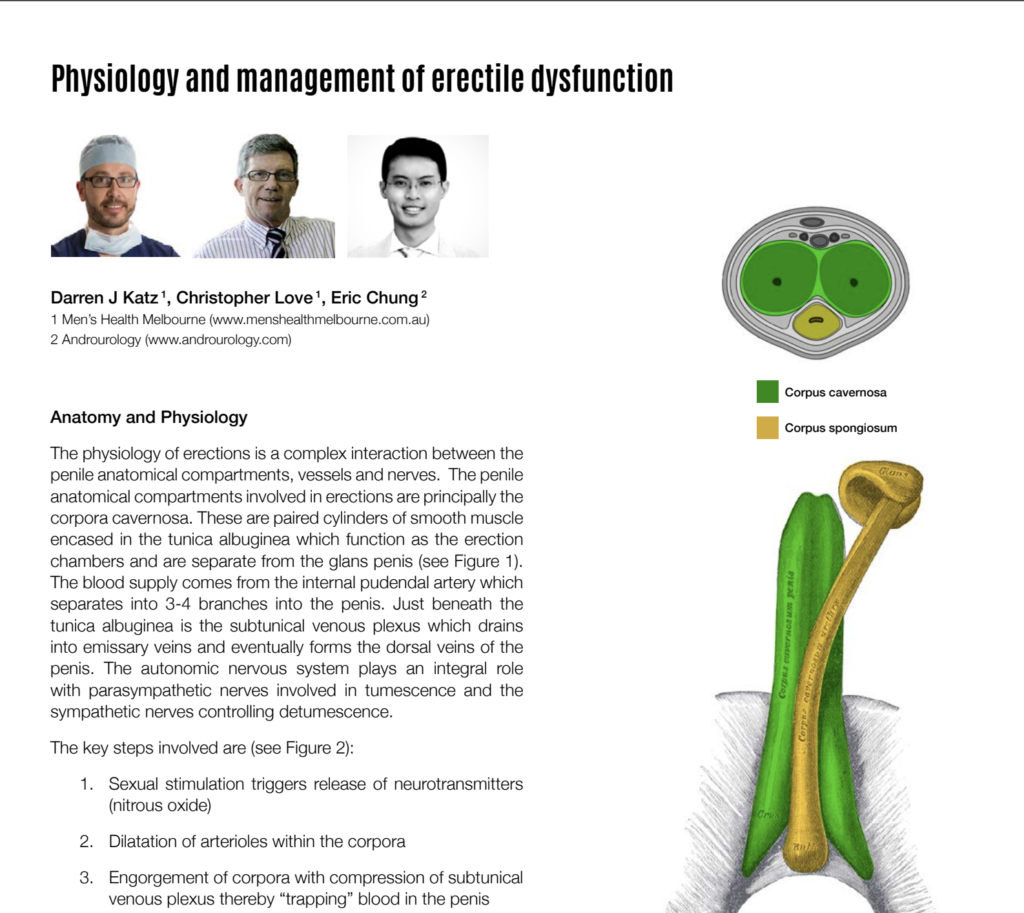Lower urinary tract symptoms and Benign Prostatic Hyperplasia
Old problems, new solutions. Benign prostatic hyperplasia is a common cause of lower urinary tract symptoms (LUTS). Newer medications and minimally invasive treatments are now

Anatomy and Physiology
The physiology of erections is a complex interaction between the penile anatomical compartments, vessels and nerves. The penile anatomical compartments involved in erections are principally the corpora cavernosa. These are paired cylinders of smooth muscle encased in the tunica albuginea which function as the erection chambers and are separate from the glans penis (see Figure 1). The blood supply comes from the internal pudendal artery which separates into 3-4 branches into the penis. Just beneath the tunica albuginea is the subtunical venous plexus which drains into emissary veins and eventually forms the dorsal veins of the penis. The autonomic nervous system plays an integral role with parasympathetic nerves involved in tumescence and the sympathetic nerves controlling detumescence.
Old problems, new solutions. Benign prostatic hyperplasia is a common cause of lower urinary tract symptoms (LUTS). Newer medications and minimally invasive treatments are now
The development of a bent erection, usually for no obvious reason, causes real concern to men who develop Peyronie’s disease (PD), and there is reluctance
Peyronie’s disease is a relatively common condition in urological practice, but is still poorly identified and understood in the wider medical community and by most
Male urinary incontinence adversely affects health-related quality of life and is associated with significant psychosexual and financial burden. The two most common forms of male
Erectile dysfunction is a common but often neglected condition. Prevalence increases with age, but is not insignificant in younger men. This article will broadly describe
Anatomy and Physiology The physiology of erections is a complex interaction between the penile anatomical compartments, vessels and nerves. The penile anatomical compartments involved in
Listen and subscribe to Below the Belt with Dr Christopher Love now on Apple Podcasts, Spotify or Google Podcasts.